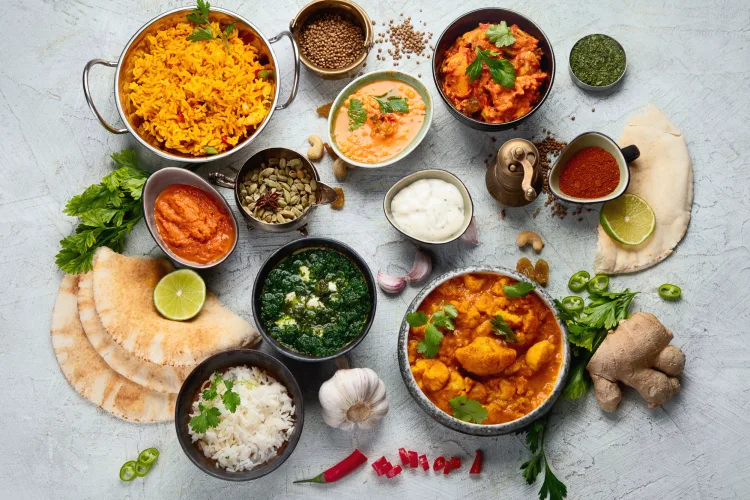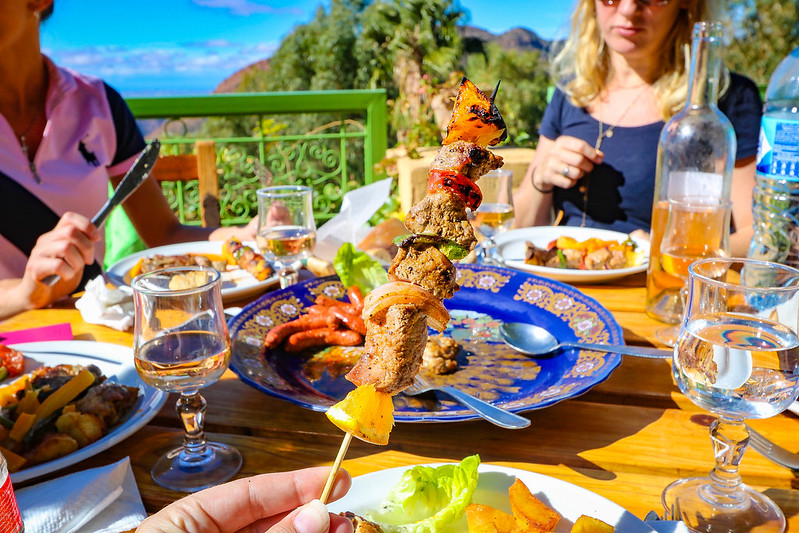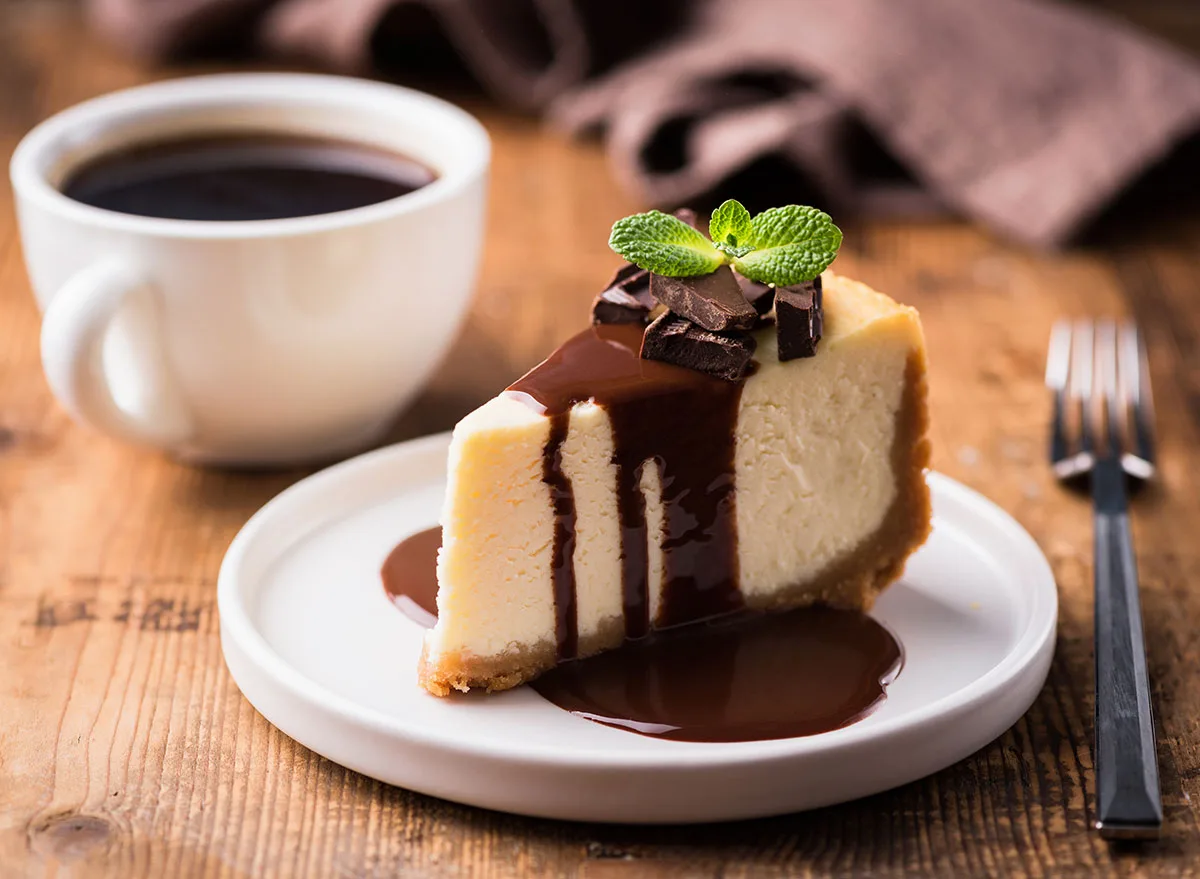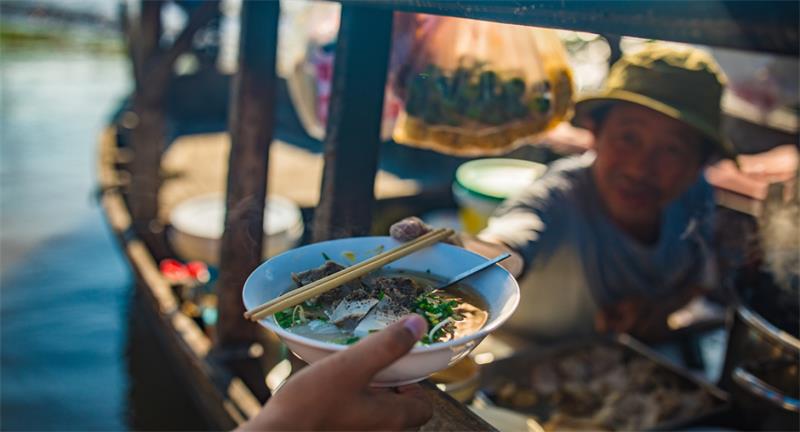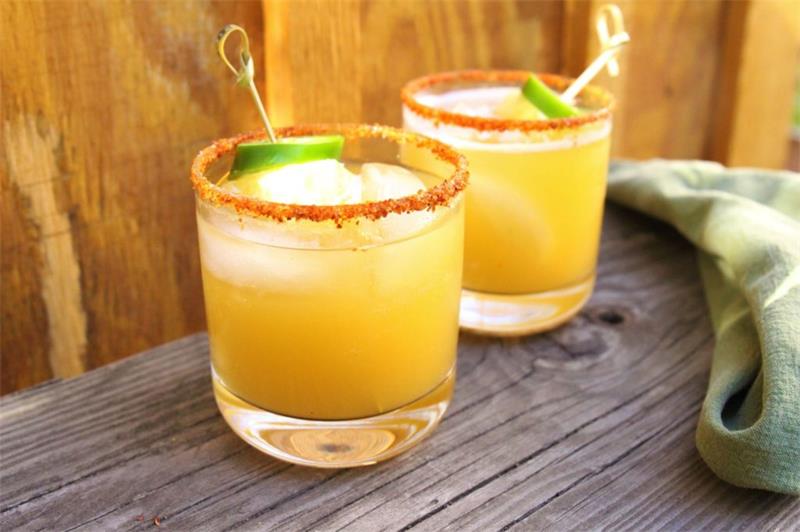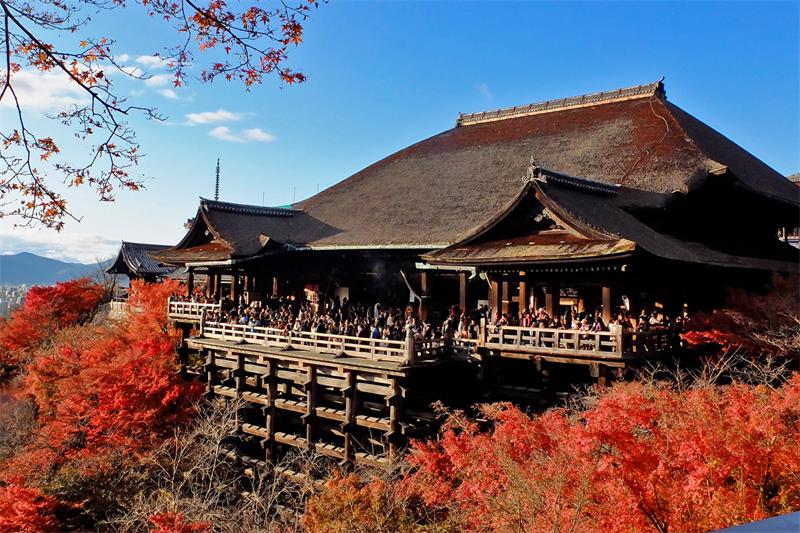Contents
Introduction
India is a country with a rich history and diversity in cuisine. With 29 states, each one has its own unique style that has been developed over centuries, with the use of spices being at the forefront of their culinary culture.
The flavors of Indian food are complex and aromatic, making them a treat for the senses. Indian cuisine can be traced back to ancient times when it evolved through various influences from trade routes, religions, invasions and migrations.
Over time, these influences have helped shape Indian food into what it is today – flavorful and diverse. One of the key aspects that sets Indian cuisine apart from others is its heavy use of spices.
Spices form an integral part of Indian cooking and are used not just for flavor but also for their medicinal properties. They add depth, complexity, color and aroma to dishes while keeping them healthy and flavorful.
The Role of Spices
The use of spices in Indian cuisine dates back to ancient times when they were used in ayurvedic medicine as well as in cooking. Spices have long been highly valued commodities throughout history due to their trade value as well as cultural significance. In Indian cooking, spices are used whole or ground up into blends that vary by region or dish.
Each spice has its own unique flavor profile such as earthy cumin or zesty coriander which are foundational flavors in most spice blends. In addition to adding depth and flavor to dishes, many spices such as turmeric have anti-inflammatory properties while black pepper aids digestion.
The Big Players: Must-Have Spices in Indian Cooking
Cumin
Cumin is a staple spice in Indian cooking and is often the first spice added to the base of dishes. Its warm, earthy flavor is essential for adding depth to curries, stews, and soups.
Cumin has a slightly bittersweet taste with hints of smokiness that make it an excellent pairing with meat dishes, especially lamb. You can also use cumin seeds as a finishing touch by toasting them over low heat and sprinkling them on top of vegetables or rice dishes.
Coriander
Coriander is another essential spice in Indian cooking that you’ll find ground or whole in many recipes. Its citrusy and slightly sweet flavor compliments cumin perfectly when used together. Coriander leaves are also known as cilantro and add freshness to dishes, while the seeds have a nutty taste suitable for curries and chutneys.
Turmeric
Turmeric gives Indian cuisine its signature yellow hue. This versatile spice has a mildly bitter yet earthy flavor that works well with both sweet and savory dishes.
Turmeric’s anti-inflammatory properties have made it popular worldwide for its potential health benefits as well. It’s most commonly found in curries but can also be used to add color to rice dishes or eggs.
Ginger
Ginger adds a warm spiciness that balances the sweetness of other spices like cinnamon or cardamom in Indian cooking. It’s often used fresh but is also available powdered and dried. Ginger provides a zingy kick that cuts through heavy flavors like ghee (clarified butter) or cream-based sauces.
Garam Masala
Garam Masala translates to “hot mixture” in Hindi, but don’t worry, it’s not necessarily spicy. It’s a blend of spices that typically includes cinnamon, cloves, cardamom, and nutmeg.
The exact proportion of each spice varies based on the region or personal preference. Garam masala is added to dishes at the end of cooking to impart a warm and complex flavor profile that elevates any curry or meat dish.
These five spices are the backbone of Indian cuisine, but they’re just the tip of the iceberg when it comes to exploring flavor in Indian cooking. Understanding their unique taste profiles is essential before experimenting with other spices or blends.
Spice Blends: The Secret to Authentic Indian Flavor
Unlocking Regional Flavors with Spice Blends
One of the secrets to unlocking authentic Indian flavors is using spice blends. The use of spice blends varies in different regions of India, and it’s what sets each region’s cuisine apart from the others.
Some popular spice blends used in Indian cooking include curry powder, chaat masala, and sambar powder. Curry powder is perhaps one of the most well-known Indian spice blends.
However, not many people know that curry powder is not an authentic Indian blend. It was created by the British during their colonization of India as a way to mimic traditional Indian flavors they encountered.
Nevertheless, over time it has become a staple ingredient in many Western kitchens and still carries many traditional flavor profiles. Chaat masala is another popular blend used in North India.
It’s made up of cumin seeds, coriander seeds, dried mango powder, black salt, and chili powder. This blend is very versatile and can be used on fruits as well as savory dishes such as chaat (a type of street food).
Sambar powder is a blend that originated in South India which consists mainly on coriander seeds, cumin seeds, fenugreek seeds, red chili peppers or flakes and lentils or beans ground together.This blend provides a unique spicy-sour flavor to vegetable stews also called “sambar”. This particular dish has had so much influence that it can even be found served alongside idli or dosa.
Making Spice Blends from Scratch
While you can certainly buy pre-made spice blends at your local grocery store or online retailer, making your own from scratch can elevate your cooking to another level entirely. To make your own curry powder at home here are the ingredients needed: ground turmeric (1/4 cup), ground cumin (1/4 cup), ground coriander (1/4 cup), cardamom seeds (1 tablespoon), cinnamon stick (2,) black peppercorns (2 teaspoons), ground ginger (1 teaspoon) and cloves(1 teaspoon).
Grind all the spices together in a spice grinder or mortar and pestle. Store in an airtight container for later use.
To make chaat masala, mix 2 tablespoons each of cumin powder, coriander powder, and dried mango powder. Add 1 tablespoon each of fennel seeds, ajwain seeds, and black salt.
Mix everything together in a bowl and store it in an airtight container. Sambar powder requires about 3-4 tablespoons of coriander seeds mixed with 2-3 tablespoons of cumin seeds along with fenugreek seeds as well as red chili to taste.Then add lentils or beans and grind all the ingredients together until you get a fine powder.
Store this blend in an air-tight jar for future use. Now that you have the knowledge to make your own spice blends take some time to experiment with different flavors on your favorite dishes!
Regional Flavors: Exploring the Diversity of Indian Cuisine
Indian cuisine is known for its vast array of flavors and spices, and this diversity comes from the country’s many regions. Each region has a distinct culinary style, influenced by climate, geography, and cultural traditions. From the rich dairy dishes of North India to the seafood-centric meals of South India, there is something for every taste bud in this country.
North Indian Cuisine: Heavy Use of Dairy Products and Meat
North Indian cuisine is characterized by its heavy use of dairy products such as ghee (clarified butter), paneer (cottage cheese), and yogurt. This region also boasts some of India’s most famous meat dishes, including tandoori chicken, butter chicken, and lamb kebabs.
These dishes are often served with hearty breads like naan or paratha. The use of spices in North Indian cooking is also notable.
While cumin, coriander, and turmeric are staples in most Indian dishes, this region also incorporates warming spices like cinnamon, cloves, cardamom, and nutmeg into both savory and sweet recipes. The result is a comforting blend of rich flavors that will leave you feeling satisfied.
South Indian Cuisine: Emphasis on Rice Dishes and Seafood
The southern part of India is known for its love affair with rice dishes. Idli (steamed rice cakes), dosa (thin rice crepes), and biryani (spiced rice dish) are just a few examples.
South India’s coastal location also makes seafood a staple ingredient in many dishes – from shrimp curry to fish fry. The spice profile in South Indian cuisine tends to be lighter than in other regions.
Mustard seeds are a common seasoning element used to add brightness and heat to dishes. Curry leaves, tamarind, and coconut are also popular ingredients used to create complex flavors in sauces and stews.
East Indian Cuisine: Focus on Fish Curries and Vegetable Dishes
Eastern India is known for its fish curries – a staple dish made with mustard oil, onions, tomatoes, ginger, garlic, and a blend of spices. This region also has a strong vegetarian tradition, with dishes like alu posto (potatoes cooked in poppy seed paste) and chholar dal (split chickpea lentil stew).
The spices used in East Indian cuisine tend to be milder than in other regions. Cumin, coriander powder, turmeric powder are frequently used but so are panch phoron which is a five-spice mix that includes fenugreek seeds , black cumin seeds , fennel seeds , nigella seeds and cumin seeds.
West Indian Cuisine: Fusion Flavors Influenced by Portuguese Colonization
The western part of India has been influenced by the Portuguese who colonized the region many centuries ago. As a result, West Indian cuisine blends traditional Indian flavors with European influences.
One example is vindaloo – a spicy meat dish made with vinegar that has roots in Portuguese cuisine. This region is also known for its street food culture which includes vada pav (potato fritter sandwich), bhajiya (vegetable fritters), and pav bhaji (a spiced vegetable curry served with bread).
The spice profile varies widely depending on the dish but generally favors bold flavors like chili powder or garam masala. No matter which region you find yourself exploring while traveling through India or at your local Indian restaurant you can expect an incredible variety of flavors that will take your taste buds on an unforgettable adventure.
Lesser-Known Spices: Unique Flavors to Discover
If you’re looking for an adventure in Indian cooking, it’s time to explore the lesser-known spices that aren’t typically found in your local grocery store. These flavors are what make Indian cuisine so special and can elevate a dish from good to extraordinary. Here are three unique spices to try:
Ajwain Seeds for Digestive Health
Ajwain seeds, also known as carom seeds, have been used in traditional Ayurvedic medicine for centuries due to their digestive health benefits. They have a strong, pungent flavor that is reminiscent of thyme or cumin.
In Indian cooking, ajwain seeds are often added to lentil dishes, breads, and even fried snacks like samosas. To use ajwain seeds in cooking, lightly toast them in a dry pan before adding them to your recipe.
This helps release their essential oils and intensifies their flavor. You can also grind them into a powder and use as a seasoning on vegetables or meat dishes.
Black Salt for its Distinct Sulfuric Taste
Black salt, also called kala namak, is not actually black but has a pinkish-gray hue. It is commonly used in vegan and vegetarian cooking as it has an egg-like sulfuric taste that mimics the flavor of eggs. Black salt is often used in chaat masala spice blends and sprinkled over fruit salads or savory snacks like roasted chickpeas.
You can easily find black salt at Indian grocery stores or specialty spice shops. It’s important to note that black salt should be used sparingly as its strong flavor can easily overpower other ingredients.
Asafoetida for its Pungent Aroma
Asafoetida, also known as hing, is a resin that has a strong, pungent aroma. It’s commonly used in South Indian cooking and is added to lentil dishes, vegetable curries, and even pickles.
Asafoetida has a unique flavor that is often described as savory and slightly bitter. To use asafoetida in cooking, it needs to be heated in oil or ghee first to release its full flavor potential.
You can also mix it with water to create a paste that can be added directly to your recipe. A little bit of asafoetida goes a long way, so use sparingly.
By incorporating these lesser-known spices into your cooking repertoire, you’ll be able to experience the full range of flavors that Indian cuisine has to offer. Don’t be afraid to experiment and try new things – you might just discover your new favorite spice!
Cooking with Spices: Tips and Tricks from
Getting the Most Out of Your Spices
The key to using spices effectively in Indian cooking is to not only understand which spices to use, but also how to use them. Here are some tips for getting the most out of your spices: – Toast whole spices before grinding them: Heating up whole spices deepens their flavor and aroma.
Place them in a dry skillet over medium heat until they become fragrant, then let them cool before grinding. – Use a spice grinder or mortar and pestle: Freshly ground spices pack more flavor than pre-ground ones.
Invest in a spice grinder or mortar and pestle for best results. – Add different spices at different times: For example, add cumin seeds at the beginning of cooking for a nutty flavor, but add garam masala towards the end for a more delicate aroma.
The Art of Balancing Flavors
Indian cuisine is all about balancing flavors – sweet, sour, salty, bitter, spicy. When cooking with spices it’s important to keep this balance in mind:
– Start small: It’s easier to add more spice later than it is to take away an overpowering one. – Combine multiple flavors: Pair strong flavors with milder ones for balance.
For example, pair turmeric with coriander and cumin. – Don’t forget acidity: Lemon juice or vinegar can be used as a finishing touch on many dishes as they help balance out all the different flavors.
Conclusion
Indian cuisine is complex and intricate – it takes time to master! But by understanding the key ingredients of Indian cooking – namely its diverse array of aromatic spices – you can start creating authentic dishes right at home. Whether you’re making a classic curry or experimenting with your own fusion creations, don’t be afraid to get creative with your spice blends.
The possibilities are endless, and the flavor experience is worth it. Happy cooking!

